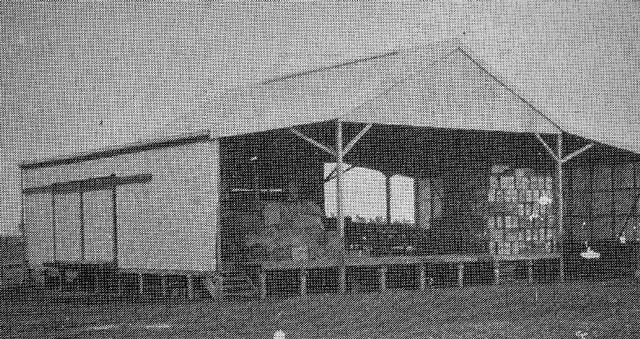Research on fruit trees began at Tatura 80 years ago. This time we look at the war years: 1939 to 1945
(cont from last issue)
There were many challenges during the war years. Finance was tight, technical staff and orchard labour were scarce because many men had enlisted in the armed services.
Essential supplies and equipment were only available with a permit for particular usage.
By mid-1940, the resources of the Station were increasingly diverted to projects associated with the war. In the Goulburn Valley, production of vegetables for canning, especially tomatoes and navy beans, was considerably expanded.
Field trials with these two vegetables were established at the Station, and fruit growers and farmers were encouraged to plant tomatoes and navy beans for processing under contract for the armed forces.
By 1941, cabbages, carrots and beetroot were also being sought for processing under contract at the Goulburn Valley canneries.
When the USA entered WW2 and many American units moved to the South West Pacific in 1942, vegetables, particularly tomatoes, were increasingly needed.
In the Goulburn Valley, the area planted with navy beans, beetroot, carrots, lettuce and cabbage increased in the early war years, but it was soon obvious that processing tomatoes were greatly needed.
Early research at the Station resulted in the tomato varieties, Tatura Dwarf Globe and Tatinter. These produced high yields and had most of the qualities needed for processed whole peeled-tomatoes, juice or paste.
Although it was hard to get labour for the research during the war, especially during harvest, research at the Station continued, albeit slowly.
As well as research associated with the war, there was basic research on both trees and soil. This included:
•fruit & shoot growth patterns of peach and pear
•selection of promising seedling and cross-bred peaches
•evaluation of a wide range of pear rootstock
•root penetration and water movement in various soil types.
Local residents, students and some staff from Dookie Agricultural College, and neighbouring orchards helped at weekends.
Each day, prisoners of war came (under armed guard) from Murchison to the station to harvest peaches. Six Land Army girls were also assigned to the Station.
Substantial help and guidance came from the Northern Victoria Fruitgrowers’s Association, the Shepparton Tomato Growers’ Association, fruit and vegetable canneries, and the State Rivers and Water Supply Commission.
Research on fruit trees takes off
By 1946 the peach and pear trees at the Station were well established and were full-bearing.
It was not until 1948 that large trials on both management of peaches, and fertilisers for pears were established.
Some of the first researchers were George Kidman, Lex Goudie, John Keatley and Wally Gayfer.
(cont next issue)
See this article in Tree Fruit Jan 2019






















